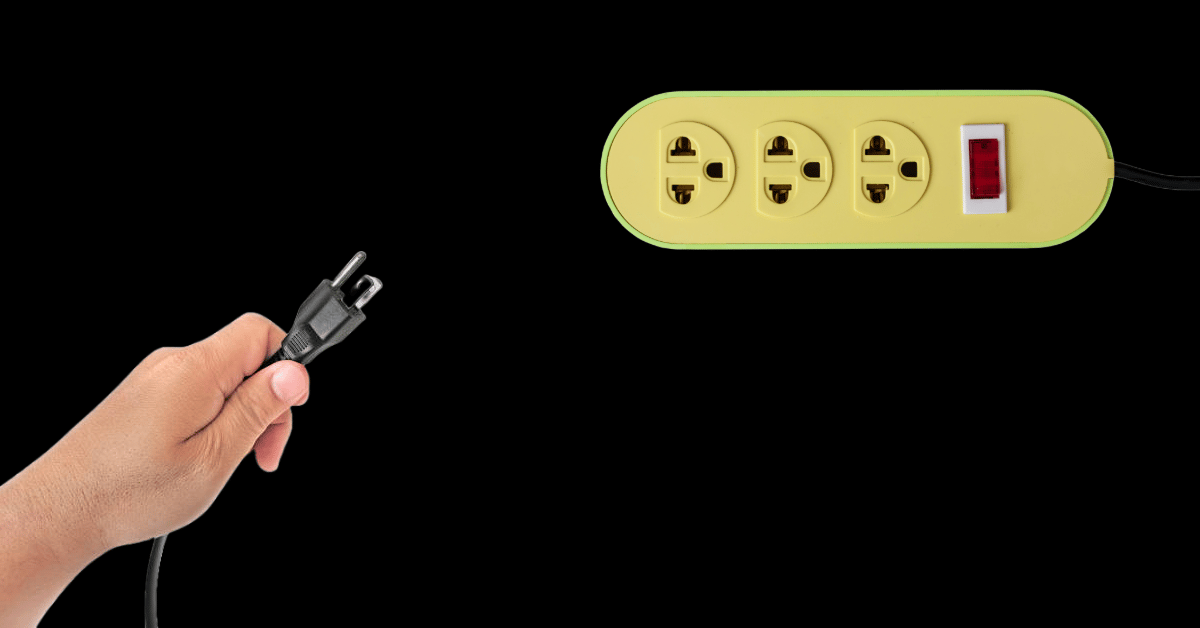
People look to brands as a source of “truth”, usually something relatable and understood at a human level.
But at our current point in history, when trust in media is at its lowest in decades, how can you effectively communicate that truth? Sure, the idea of “media trustworthiness” usually centres around journalism. But if history’s anything to go by, trust in marketing tends to mirror views on news media. So in a post-truth world where nobody believes in anything, how do you get people to believe in YOUR thing?
- Devin Pike, Guest Editor 💜
PRESENTED BY THE ATTENTION SEEKER
0 —> 77K followers in 100 days? This could be you.
You’ve seen other businesses blow up online and thought:
“How the hell did they do that?”
You're not missing some secret magic formula. You’re just missing the right strategy. So let us help you build one (in just 1 day!).
At the Cohort Intensive, you’ll get:
✅ A full content strategy
✅ A repeatable system you can stick to
✅ A plan to grow your business through social
…all alongside the team with 3.2M+ followers & 100M monthly views.
We recently helped Tough Yarns with their social strategy. Three months later? They’ve got 77K+ followers across IG & TikTok.
Why shouldn’t your brand be next? 👇
24 Oct | Auckland | $3000 |12 spots
WHAT’S HAPPENING IN MARKETING TODAY?
Threads trials ‘Ghost Posts’, X is losing the battle & the ultimate white girl experience just dropped

Threads experiments with "Ghost Posts" which auto-delete after 24 hours
Oooo, fun. I like this idea. When Threads first launched, Adam Mosseri teased the idea of auto-deletion and auto-archiving posts, which the team added as an option, since many users were opposed to the idea. Now the platform is testing a new option, “Ghost Posts” (a nod to Snap??) which would enable users to share an update that would be auto-archived after 24 hours.
Huge news for annoying people. Or those who post hot takes but can’t be arsed with days or even weeks’ worth of debate haunting their notifications.
Speaking of Threads, the platform is on track to exceed X in active usage
This comes as no surprise, really. X has been the slowest, most painful ship to watch sink in all of history. Late last week, data analytics platform Similarweb shared this chart, which sparked joy among the Threads community.
It basically shows that the platform is now on par with X in terms of daily active users, and is even exceeding it on some days. You mean to say people aren’t choosing the racism app??? Who would have thought!
Calling all white girls: Starbucks is doing an in-store experience for Taylor Swift's new album
This is like the Bat Signal but for the Frappuccino-drinking, iPhone-wielding, legging & Ugg-wearing, messy bun blondes of America. I gotta say, it’s a genius collab in terms of grasping their demographic by the lululemons.
Taking place in Nashville, Tennessee (duh), the coffee chain is hosting “the largest global listening party” for Swift's new record, along with a pop-up vinyl shop, photo booth and Swiftie-tailored offerings like friendship bracelets and glitter-dusted cold foam drinks (glitter and the color orange are visual themes of “The Life of a Showgirl”). Lord have mercy, I fear this may cause a frenzy.
-Sophie Randell, Writer
Hey, do you like YAP?
If so, why not share it with a friend? The more we grow this thing, the more resources we can put into making it awesome for you. Even if every subscriber invites just 1 person to YAP, we’ll meet our growth goal for 2025. So, you in?
DEEP DIVE
Post-truth marketing: How do you build a brand when no one believes anything?

This morning, I read a Gallup report that trust in U.S. media has fallen to a record low of 28%. That means only 28% of Americans have a “great deal” or “fair amount” of trust in newspapers, television and radio to report the news fully, accurately and fairly. Crazy.
What's also crazy is this is down from 31% last year and 40% five years ago. I mean, who can blame them? Almost all of American media is run by only six giant companies, and one media mogul that is practically responsible for the rise of Trump himself. Bias? We don’t know her, right?? Baby, bias is breaking down the newsroom door and claiming squatters’ rights. And you can absolutely forget about trust. This is not just a crisis for journalism; It’s a crisis for marketing (and society, and everyone who wants to know anything about anything).
Because when the public stops trusting traditional media, that distrust doesn’t stop at the newsroom door. It spills into every message, and every claim, which includes us/our ads. If belief has replaced fact as the currency of persuasion, marketers are now operating in a post-truth marketplace.
How we got here
Obviously distrust in media isn’t new, but it’s certainly metastasized. Decades of polarisation, algorithmic echo chambers, and brand-led “content” have eroded the idea of a neutral source. The 2010s promised transparency through the internet. Instead, we got filters, influencers, and AI-generated everything.
Historically, marketing has always borrowed trust from institutions. Press coverage, celebrity endorsements, and the glossy authority of a print ad. But those scaffolds have collapsed. The audience no longer assumes authority; they assume agenda. We’ve entered an era where everything feels like marketing. And thus, nothing feels believable.
Belief as the new brand currency
In a post-truth world, the facts matter less than the frame. People don’t want evidence, they want alignment. They believe what feels emotionally consistent with their worldview, not what’s empirically true. That’s not cynicism, it’s human behaviour. We’ve always been storytelling creatures, not fact-checking machines. But now, digital culture has supercharged our ability to live inside our own narratives.
The brands that succeed in this landscape aren’t necessarily the ones with the most credible claims. They're the ones that feel the most real. The ones that resonate emotionally, culturally, and morally with their audience. Think about Patagonia. Its authority doesn’t come from ad spend, but from a long-term coherence between what it says and what it does. In other words: truth has become experiential, not informational.
The new rules:
So then, how do marketers build belief when belief itself has become so fragile? The uncomfortable truth is that you can’t manufacture it, but you can earn it through coherence:
Do what you say, consistently. Rome wasn’t built in a day, and trust isn’t built through a single campaign; it’s built through accumulated proof. The internet remembers everything, especially the contradictions.
Anchor in values, not virtue-signaling. People can smell performative ethics from a mile away. Authenticity isn’t about saying the right thing; it’s about meaning it repeatedly.
Leverage transparency as strategy. Show your work. Open the black box of how things are made, priced, or sourced. Transparency doesn’t eliminate skepticism, but it does humanise it.
Invest in community credibility. Third-party validation now comes from micro-communities, not mass media. Build advocates, not audiences.
Tell smaller, truer stories. Grand narratives sound suspicious in an era of disinformation. Micro-truths at human-scale that are humble, and more importantly real, will always resonate deeper.
Cultural parallels
This isn’t the first trust collapse we’ve seen. The postwar era of the 1960s brought similar disillusionment with institutions. But, it birthed counterculture and the golden age of creative advertising. “Think Small” (Volkswagen, 1959) worked because it subverted authority with honesty. “Lemon” was radical because it told the truth when others didn’t.
We now find ourselves back here in a similar moment, where rebellion and sincerity are merging again. Only now, rebellion looks like humility. In a world that constantly lies, the brand that under-promises suddenly feels revolutionary.
The opportunity in disbelief
The Gallup numbers might sound bleak, but they’re also clarifying. If trust in institutions is collapsing, it means trust in people is rising. For marketers, that’s a cue to build horizontally, not vertically. Brands that embrace vulnerability, honesty, and participation will outlast those clinging to authority. The age of the brand as preacher is over; the age of the brand as participant has begun.
We may live in a post-truth world, but that doesn’t mean we have to market like it. The future belongs to brands that don’t just tell stories, but prove them, live them, and invite others to witness them unfold.
-Sophie Randell, Writer
TREND PLUG
"No, we did that 2 years ago"

This one’s for the Miranda Priestly of the office. You know who you are, besties.
This soundbite comes from Miranda Priestly’s line in The Devil Wears Prada, where she sharply dismisses each suggestion with icy, blunt efficiency. The movie itself is iconic, and Meryl Streep gave us the perfect template to be ruthless (and yet, crack-up) icons of our own.
The sound perfectly captures that specific kind of rage you feel on a day at work when no one seems to be as good at their job as you are at yours... but you keep hearing their sh*tty ideas anyway.
(If you specifically identify with that… that’s cool and all, but you’re probably the Miranda Priestly of your workplace. Do with that what you will.)
How you can jump on this trend:
To the sound, record yourself (or your subject) lip-syncing to Miranda’s iconic lines. Make it interesting by leaning into the dissatisfaction, distaste, and quiet fury in your expression - basically, channel “I’m surrounded by idiots with bad ideas” energy. Then, add on-screen text describing a workplace or brainstorming situation as if you’re reacting to someone’s awful suggestion.
A few ideas to get you started:
Me and ChatGPT brainstorming TikTok trends for the company account
When I’m helping with a rebrand and someone says “what if we just make the logo bigger?”
POV: The interns are pitching “content strategies” again
- Nico Mendoza, Intern
FOR THE GROUP CHAT
😂Yap’s funniest home videos: Such a casual fall
❤How wholesome: Speed meets his biggest fan
😊Soooo satisfying: Glass jars vs concrete stairs
🍝What you should make for dinner tonight: Salmon bowls
ASK THE EDITOR

As the managing director of a tech startup, I've been building my brand on LinkedIn for a while now. Should I try to get my team to start posting, too? - Manu
Hey Manu!
I would absolutely get your team to start building their brands on LinkedIn. And they don't need to just talk about the work they do with you. Instead, I'd have them post stories about their personal journey. So this will sometimes relate to their work, and other times it might relate to their passions outside of work.
The reason it's good for them to post about other things beyond your business is that they are going to find their own audiences who relate to their content. This will give your brand more visibility and help you reach people who would never follow you on your personal LinkedIn. The challenge is going to get your team to actually post consistently. But if you can do that, you'll grow your brand's presence on LinkedIn exponentially!
- Charlotte Ellis, Editor ♡
Not going viral yet?
We get it. Creating content that does numbers is harder than it looks. But doing those big numbers is the fastest way to grow your brand. So if you’re tired of throwing sh*t at the wall and seeing what sticks, you’re in luck. Because making our clients go viral is kinda what we do every single day.
